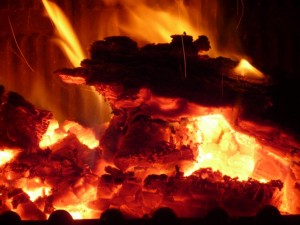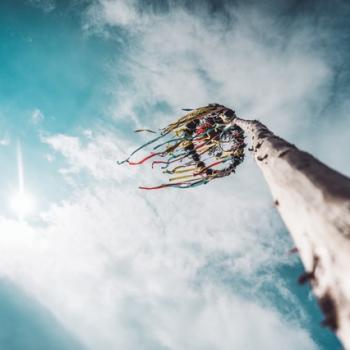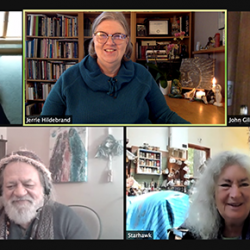“A good anger acted upon is beautiful as lightning and swift with power. A good anger swallowed – a good anger swallowed clots the blood to slime.” — Marge Piercy
Hindu mythology tells of a great battle between the gods and the demons. After the battle has raged for a while, the demons have captured all of the male gods. And so, in their hour of need, they call upon Durga, a powerful goddess, for aid. As Durga attempts to rescue the male gods, the demon Shumbha hears of her great beauty. He sends several of his demon minions to bring Durga to him, by persuasion if possible, by force if necessary. Durga learns of this plan and kills the first of the demon minions. Shumbha promptly sends two more demons, Chanda and Munda, with the same mission.
 And now, Durga becomes enraged by the continued efforts of this demon to possess her. A new goddess emerges from Durga’s forehead. Kali, the personification of Durga’s rage. Kali defeats Chanda and Munda and disappears as quickly as she had come.
And now, Durga becomes enraged by the continued efforts of this demon to possess her. A new goddess emerges from Durga’s forehead. Kali, the personification of Durga’s rage. Kali defeats Chanda and Munda and disappears as quickly as she had come.
A good anger acted upon is beautiful as lightning and swift with power.
I am reminded of this story so often recently. Every time I hear a story of another African American killed by police. Every time I hear a story of another sexual assault. Every time I hear a story about those who have caused horrendous harm not held accountable for the impacts of their actions.
Durga’s very selfhood is threatened by Shumbha, who would treat her as a mere object, something to be used for his own benefit. The use of force against her is seen as justified. And Durga becomes enraged and Kali is born, Goddess of anger and power.
I read the stories and I become enraged. I feel the anger growing within me, gaining strength and power. Have you felt this, too? This fire in the belly, gaining strength and power.
And have you tried to swallow it? Have you tried to go on with daily life pretending the fire were not there? Have you tried to rush yourself toward forgiveness? Have you been told that anger is always wrong, evil, destructive? Or at least uncouth, uncivilized? Something to be tamped down, repressed, kept under wraps. Do you fear the force of your own anger?
A good anger swallowed – a good anger swallowed – clots the blood to slime.
Most of the spiritual teachings on anger that I’ve encountered – or been told – have to do with letting go, with forgiveness, with the spiritual dangers of anger and the superiority of non-angry states.
But Hindu tradition tells us another story. Anger is divine. Justified anger has a place among the worshipped ones. Kali, personified anger, saves the day, restoring Durga’s personhood and safety.
Anger has a place in the heart. Anger has a place in the soul. Anger even has a place in the body politic. As environmental activist Joanna Macy says, anger is always a response to a perceived injustice. When we are angry, it is something within us telling us that some boundary has been violated, or that something is not fair. There is some injustice happening. I believe that all anger must be listened to and honored, and especially that which arises from witnessing the injustices and oppressions that surround us.
A good anger acted upon is beautiful as lightning and swift with power.
A good anger swallowed – a good anger swallowed – clots the blood to slime.
I believe anger should be listened to and honored partly because of what happens when it is not. When it is repressed instead, it does not go away. It simply goes underground. Anger swallowed finds other outlets. In deepening resentment. In checking out into a deadening inertia. Swallowed anger eventually lashes out – either at the one who carries it or at someone else.
When we feel the all too real injustices that surround us, anger rises. Have you felt this rising fire? This tension building up and building up inside that demands – something.
Ah, but what. What does it look like to act well upon a good anger?
In addition to the messages which tell us that anger itself is wrong and should be set aside as quickly as possible, we have all kinds of messages about what it looks like to express anger well. Women are criticized for being too emotional and irrational if we seem too angry. African Americans are told to be calm. Whenever injustice is challenged in public, those who bring the challenge are told how to speak, how to stand, how to act within some narrow range of respectability. Else all their concerns will be discounted. Just calm down. Just be patient. Don’t get angry. Don’t express your rage. Leave emotion out of it. Which is often a way of prioritizing the comfort of those in power.
To the version of this message that he heard in his day, Frederick Douglas replied:
Those who profess to favor freedom, and yet deprecate agitation, are people who want crops without plowing up the ground. They want rain without thunder and lightning; they want the ocean without the awful roar of its waters. This struggle may be a moral one; or it may be both moral and physical; but it must be a struggle. Power concedes nothing without a demand; it never did and it never will.
In our own time, actor Jesse Williams says to those who criticize the Black Lives Matter movement:
The burden of the brutalized is not to comfort the bystander. That’s not our job, alright – stop with all that. If you have a critique for the resistance, for our resistance, then you better have an established record of critique of our oppression. If you have no interest, if you have no interest in equal rights for black people then do not make suggestions to those who do. Sit down.
A good anger acted upon is beautiful as lightning and swift with power.
Still, though, there are ways of expressing anger that do go too far. And the line between a good anger well acted upon and a good anger badly acted upon is retaliatory harm. The line between an appropriate response and an inappropriate response is whether people are getting hurt or killed. And harming people in retaliation can take the form of words as well as bullets. Tweeting death threats, for example.
But sometimes this can be a difficult line to discern when it comes to words spoken in anger. It is never a pleasant experience to be the subject of another person’s anger. But the line between appropriate and inappropriate expressions of anger is not whether people are being made uncomfortable, and not whether people are being held accountable, but whether people are being hurt or killed.
To me the most interesting part of the story of Durga and Kali and Shumbha is actually the thing that doesn’t happen. Durga and Kali kill all of the demons that Shumbha sends after Durga. But they do not harm Shumbha himself.
This suggests to me an interesting metaphor. If Shumbha is the one who would possess Durga, the demons he sends are the means by which he seeks to accomplish this. Perhaps we might see them as representing the forces of domination, manipulation, violence, oppression, the various ways that we cause harm to one another. Such things might well be classified as demons in mythological symbol. If we look at it this way, their destruction is appropriate. Our rage rises in response to these forces of control, oppression, and violence. However, we should not allow this appropriate anger to lead to retaliatory violence, just as even the goddess of anger herself did not kill Shumbha for attacking Durga.
As long as we stop short of hurting people, there are so many ways to act well upon a good anger. We can gather in community to give voice to our experiences and the emotions that they bring up. We can gather in protest, demanding that people pay attention. We can participate in civil disobedience. We can seek to influence the political process by calling or writing to our elected officials or showing up for hearings on pending legislation. We can write letters to the editor or post things on social media in an effort to raise awareness and connect with others who feel the same way. We can create art of various kinds to express our rage and sadness. All of these things can be the lightning that helps to catalyze the changes we seek. And they are beautiful and have power to them.
When you feel the fire rising, do not swallow that anger down. Do not listen to the voices that tell you that anger is inherently bad and should be set aside as quickly as possible. Do not force yourself into deadening numbness. A good anger swallowed clots the blood to slime. There are so many ways to act well upon a good anger. Honor your anger and learn what it is trying to teach you. Let it lead you into courageous response. Let it be the torch that lights the way to brighter futures.
Let us honor the anger that rises up in response to injustice. It is sacred. May it move us to action that is beautiful as lightning and swift with power.













